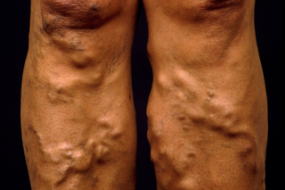Meckel’s diverticulum is the leading congenital anomaly of the gastrointestinal tract. It results from incomplete obliteration of the vitelline duct, which connects the midgut to the yolk sac in the fetus. The vitelline duct typically involutes between the 5th and 6th weeks of human gestation.
Anatomy;
- It is a true diverticulum- it contains all three layers of the small intestine.
- Blood supply- vitelline artery
Persistence of the vitelline duct can also cause;
- Omphalomesenteric cysts and fistulas
- Fibrous bands from the diverticulum to the umbilicus
Rule of 2’s for a Meckel’s diverticulum
- It occurs in 2% of the population
- Symptomatic in 2%, mostly in children less than two years of age
- Male to female ratio of 2:1
- Located within 2 feet proximal to the ileocecal valve
- It can be 2 inches in length
- Can have two types of mucosal linings-native ileal mucosa and ectopic mucosa, mostly gastric
Risk factors for developing symptoms
- Age >50
- Length>2cm
- Male sex
- Histologically abnormal tissue
Clinical presentation
1. Asymptomatic- incidental finding on imaging or during abdominal surgery
2. Symptomatic-
A)Lower GI bleeding– most common
- Present with Frank blood per rectum, maroon stools in children, or melena stools in adults
- A higher index of suspicion in children and adults>40 years
- Diagnosis- Meckel’s scan or mesenteric arteriography. Others are double-balloon enteroscopy and capsule endoscopy
- Differential diagnosis- any cause of GI bleeding
B)Intestinal obstruction–
- Can result from volvulus, intususception, torsion, hernia diverticulitis or inversion
- Present with abdominal distension, abdominal pain, nausea, vomiting, and signs of obstruction
- Diagnosis- abdominal pelvic CT scan
C) Acute abdominal pain–
- Can result from inflammation, perforation of the diverticulum or surrounding bowel, or related to intestinal obstruction
- Signs and symptoms are nonspecific. Tenderness is located more toward the midline, but the location of the diverticulum can vary, so not helpful
- Perforation presents with signs of peritoneal irritation
- Diagnosis- finding a normal appendix during exploration should prompt evaluation for a diverticulum. Difficult to distinguish from acute appendicitis on imaging
- Differential diagnosis- other causes of an acute abdomen
Treatment
Managed according to clinical presentation
1. Asymptomatic;
a)On imaging- no treatment is required
b)During laparotomy-
– resect in children or young adults
-Adults< 50 years- resection only for those at high risk of developing complications( a long broad-based diverticulum)
– adults> 50 don’t resect
2. Symptomatic- ensure the patient is stable first. Then do a surgical resection of all symptomatic or complicated diverticula
Surgical procedures;
- Diverticulectomy- diverticulum is excised at the base
- Segmental resection- recommended for a bleeding diverticulum has a palpable abnormality or has a broad base
Complications of a Meckel’s diverticulum
- Bowel obstruction
- Perforation
- Infection
- Neoplasia
- Hemorrhage












